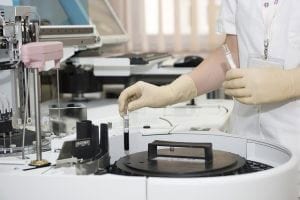When we are injured, new cells flow to the injury site and replace the body’s damaged cells. This process is called “cell migration.”
According to a recent article in Science Daily, researchers are also aware of the migration of abnormal cells. The highly invasive glioblastoma multiforme (GMB) is one example of migrating tumor cells. Conventional methods used to remove tumors have been ineffective against the rapid spread of tumor cells.
Using an Alternate Strategy
First, the researchers identified all aspects of the GMB cell invasion mechanism. They learned that cell migration is determined by the orientation and structure of the “extracellular matrix” which surrounds the cells. The team found that by creating similar structures they could control the migration.
About the Study
The study was conducted by Japan’s Fukui University researchers. Using nanofibers that are similar to the extracellular matrix, the researchers examined the effect on GMB cells.
The process called ‘electrospinning’ involved the use of a nanofibrous sheet. There were distinct differences in the movement of cells as they responded to the different densities of nanofibers.
Specifically, the more dense fibers created ‘focal adhesions’ which are clusters in cells that slow cell migration.
Using this new information, the team designed a nanofibrous sheet that included stepwise and varying densities. This new process allowed the researchers to have control of the cell migration.
The density of fibers was arranged from the highest to the lowest. This configuration restricted the cells’ movement as the majority were trapped in the higher density zones.
Conversely, a configuration of the lowest to the highest increased migration. Another interesting factor pertains to the gaps in the zones that interfered with cell migration. In this scenario also, cells were confined to the higher-density zones.
About Cell Trapping
The migration process was called “cell trapping” recalling the fish traps that caused the fish or insects to migrate in one direction and then trapped them.
Looking Forward
Dr. Fujita predicts that their study may lead to more widespread utilization of regenerative medicine. He added that the process can be used to produce biological drugs such as antibodies, vaccines, and proteins.








